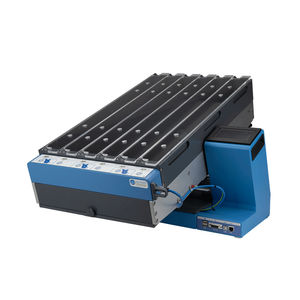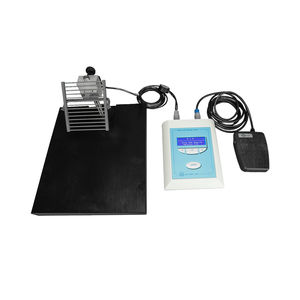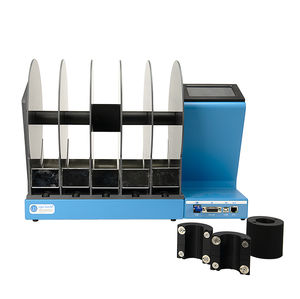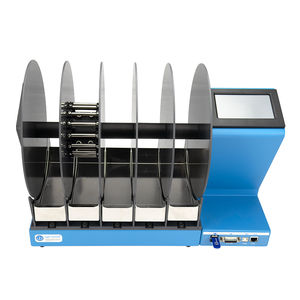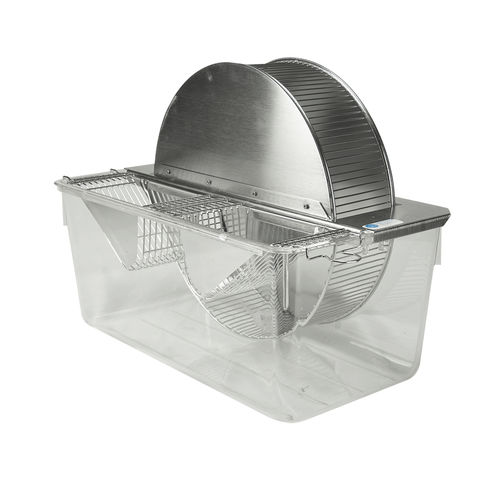
Animal research activity wheel 1800/50for micefor rats
Add to favorites
Compare this product
Characteristics
- Applications
- for animal research
- Options
- for mice, for rats
Description
Running wheels provide a convenient method for measuring rodent spontaneous motor activity over long periods of time. Used for research on circadian rhythms, motor function, aging, energy balance, recovering and pain related exercise.
Robust mouse and rat models measure rodent activity across time. Models available with an LCD counter and can also be connected to a Windows PC. Data can be collected from up to 12 wheels simultaneously.
Background
Running (also rotating/activity) wheels provide an easy, convenient method for measuring laboratory mice or rats motor activity over long periods of time. Especially useful for research on circadian rhythms or motor function as well as aging, energy balance and obesity.
Recently, it has become more common to investigate physical activity using both running wheels as well as general cage activity in succession (Pistilli et al., 2011). This enables direct comparison between the two methods.
Robust, automatic count, optimized for tracking
Measures rodent activity across time. Models available for mice or rats.
Robust, low maintenance set up for easy monitoring.
Stainless steel wheel with Teflon bushing selected for low friction and smooth operation. The wheel is housed in a standard clear polycarbonate cage for easy viewing and tracking. A stainless steel wire lid with specially designed locks is fastened securely to the cage body.
The cage lid incorporates a lodging for a water bottle holding up to 500ml (not included) and U-shaped food hopper pellets. A secure stainless steel lid covers the opening at the edge of the activity wheel.
Catalogs
No catalogs are available for this product.
See all of Ugo Basile‘s catalogsRelated Searches
- SpO2 monitor
- Activity meter
- Animal research cage
- Modular animal research cage
- Experiment maze
- Induction chamber
- Mice experiment maze
- Rat experiment maze
- Animal research experiment maze
- Rodent animal research cage
- Laboratory stereotactic frame
- Data acquisition system
- Rodent laboratory stereotactic frame
- Bench-top laboratory stereotactic frame
- Rodent induction chamber
- Analgesia meter
- Operant behavior system
- Mice animal research cage
- Anesthesia induction chamber
- Rodent analgesia meter
*Prices are pre-tax. They exclude delivery charges and customs duties and do not include additional charges for installation or activation options. Prices are indicative only and may vary by country, with changes to the cost of raw materials and exchange rates.


